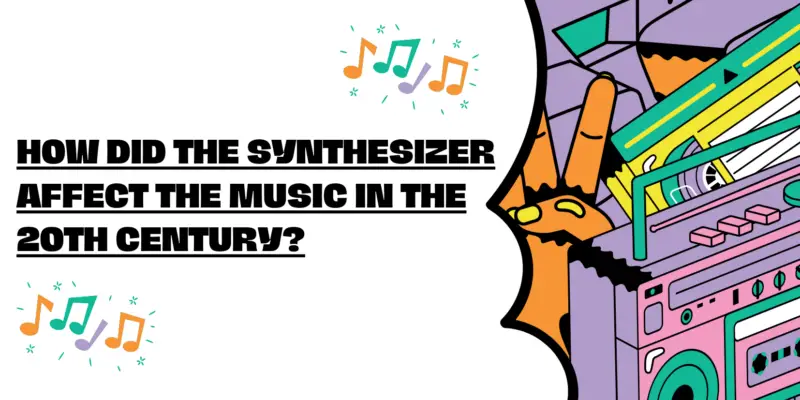The 20th century was a period of remarkable transformation in music, and one of the most influential agents of change during this time was the synthesizer. Emerging in the mid-20th century, the synthesizer revolutionized music production and composition, contributing to the creation of new genres, sounds, and artistic possibilities. In this article, we will explore how the synthesizer profoundly impacted music in the 20th century.
1. The Birth of Electronic Music (1950s-1960s)
The synthesizer’s earliest days were marked by experimentation and innovation. Pioneers like Robert Moog, Donald Buchla, and Karlheinz Stockhausen were at the forefront of electronic music exploration. The synthesizer’s ability to generate entirely synthetic sounds and manipulate them in real-time opened up uncharted territory for composers. Stockhausen’s pioneering work with the RCA Mark II and Moog’s introduction of the modular synthesizer in the 1960s laid the foundation for electronic music as we know it today.
2. The Rise of Synth-Pop and New Wave (1970s-1980s)
The 1970s saw the emergence of the Minimoog and other monophonic analog synthesizers, which played a pivotal role in the development of genres like synth-pop and new wave. Artists like Kraftwerk, Gary Numan, and Depeche Mode embraced synthesizers as central instruments in their music. Synthesizers produced catchy, futuristic sounds that characterized these genres, influencing countless other musicians and producers.
3. Experimentalism and Sound Design (1970s-Present)
The synthesizer became a playground for sonic experimentation in the hands of artists like Brian Eno and Wendy Carlos. Eno’s ambient compositions, created with the help of synthesizers and tape loops, redefined the boundaries of music, while Carlos’s groundbreaking album “Switched-On Bach” demonstrated the synthesizer’s potential for classical reinterpretation. The synthesizer’s role in sound design for film scores, exemplified by Vangelis’ work on “Blade Runner,” became a hallmark of the cinematic experience.
4. The Birth of Techno, House, and Electronic Dance Music (1980s-Present)
The 1980s and 1990s witnessed the explosive growth of electronic dance music (EDM) genres like techno and house. Synthesizers and drum machines played a central role in the creation of these genres. Instruments like the Roland TR-808 and TR-909 became iconic in shaping the beats and rhythms of electronic dance music, setting the stage for the global EDM phenomenon that continues to thrive today.
5. Progressive Rock and Synth Prog (1970s-1980s)
Progressive rock bands like Pink Floyd, Yes, and Genesis integrated synthesizers into their music, expanding the boundaries of rock and pushing the instrument into the mainstream. Pink Floyd’s use of the EMS VCS3 and the Minimoog in albums like “Dark Side of the Moon” showcased the synthesizer’s potential for creating atmospheric and otherworldly soundscapes.
6. The Digital Revolution (1980s-Present)
The advent of digital synthesizers in the 1980s, exemplified by the Yamaha DX7 and the Roland D-50, transformed the music landscape once again. Digital synthesis offered a new palette of sounds, including realistic instrument emulations and evolving textures. This era marked the transition from analog to digital synthesis, expanding the synthesizer’s versatility and accessibility.
Conclusion: A Sonic Evolution
The synthesizer’s impact on 20th-century music cannot be overstated. It revolutionized music production, composition, and performance, spawning entirely new genres and pushing the boundaries of what was possible in sound. From experimental electronic music to pop, rock, dance, and film scores, the synthesizer’s versatility has left an indelible mark on the musical landscape.
As we move into the 21st century, synthesizers continue to evolve, offering musicians and producers even more diverse and innovative sonic possibilities. The synthesizer’s enduring legacy ensures that it will remain a key instrument in the ongoing evolution of music and sound art.


